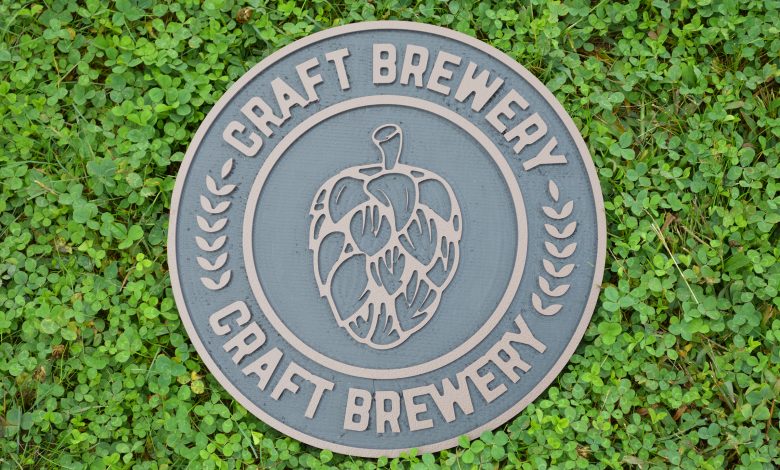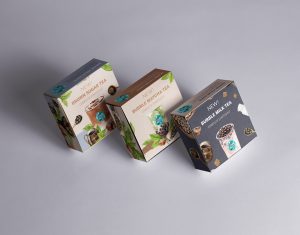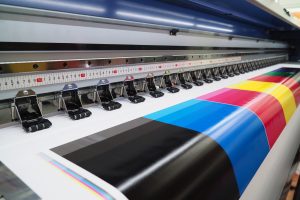Environmentally Friendly Wide-Format Printing Practices
Eco-friendly media, inks and printers can help sign shops save the planet and offer clients sustainable projects

As a global society, we need to do all we can to reduce our carbon footprint before it’s too late. No matter your feelings on the subject, your customers will want to know how you can work together to stay “green.”
For sign shops, that means offering more sustainable solutions in running their daily businesses as well as providing green printing options for their clients. Limiting waste and keeping materials out of landfills are just small parts of the effort to make the signage and graphics market more eco-friendly.
Over the years, many Fortune 500 corporations and major consumer brands have become more eco-centric and are requesting print projects that are created for them that use sustainable printing, inks and media.
Suppliers Addressing Demand

“The demand for more eco-friendliness is being addressed in a few ways. The obvious ones are better manufacturing practices and materials,” reports Michael Maxwell, senior manager at Mimaki USA in Suwanee, Georgia.
“However, some manufacturers such as Mimaki have improved efficiencies on the equipment side resulting in an eco-friendlier platform. Features such as Mimaki’s Core Technologies not only lower costs and improve throughput, but are also better for the environment. As an example the Nozzle Check Unit decreases waste by ensuring that the printer is actually producing a drop of ink. This device reduces the potential for wasteful reprints that require more ink and material.”
He says with global warming and the environment needing as much help as possible, shops need to research new products on the market as they look into fabricate eco-friendly signs using media, printers and recycling. “Print service providers interested in more ecologically friendly production should look for products that address and reduce waste. Printers that minimize production pitfalls and require lower power consumption are a great way to start.”
More Sustainable Options Available

Image courtesy of Mutoh America.
Mark Rugen, director of product marketing and education at Mutoh America, Phoenix, Arizona, says some trends seem like they are more continuously developing ideas from over the last few years. “For example, paper manufacturers are continuously developing better recyclable papers. With that said, print manufacturers are developing compatible inks. Many print manufacturers are also carefully developing machines that use less power or have power-saving features as well as inks with lower volatile organic compounds that increase both environmental and human safety,” he explains.
“Let’s also talk about the power to run the wide-format printer. Using 110 volts instead of 220v saves energy for everyone. Also, developing inks that require less heat to cure can mean less power used and again that saves in many ways.”
“Users might be tempted to turn off the printer when not in use, but this could be detrimental to the environment. How? Well, when a printer is off, the internal cleaning mechanisms for printheads are also off. That can result in failing heads. The user would then do more ink nozzle checks and cleanings, wasting inks that then must be disposed of properly. Besides, there is a possibility that a printhead could fail due to non-use and that means once again disposal and replacement. Both causing greater damage to the environment than simply leaving the power on so that internal cleaning is continuous,” Rugen adds.
Sustainable Materials

Kevin Duffy, vice president, sales & marketing at Vycom Corp. located in Scranton, Pennsylvania, says there are a number of eco trends particularly in the media category. “Speaking strictly of rigid media, eco-friendly graphics can include material content/construction and/or post-use recycling. Regarding content/construction, performance plastics – such as PVC and HDPE sheets – are an ideal choice because they already contribute to sustainability: durable construction designed to replace wood, metal, and other traditional materials in a variety of applications (therefore reducing high-turnover replacement needs); and fuel efficiency and energy savings in transport. And – ultimately – these materials are recyclable.”
Duffy notes that sign shops using rigid substrates that include a percentage of recycled material is a good start to going green. “More importantly, PSPs that regularly use expanded PVC should look beyond the content of the board, and forward to what happens when that graphic is ready to be retired. While there are some take-back programs available, sign and digital print shops should ensure the selected program doesn’t simply dump the material in a landfill, but instead returns it to a responsible recycler that can clean, sort and repurpose the content into sustainable performance plastics.”
Eco-friendly Inks

Images courtesy of Printograph.com
Erina Sookiasian, marketing manager at Printograph.com says that some trends they have been seeing in the print industry lately are companies using eco-friendly inks, offering a variety of recycled products and providing customers with different ways to recycle products.
“In our case, we rely on our vendors to supply us with quality recycled products. We’ve also noticed that even though recycled products are being offered much more, they are not necessarily being advertised as such,” she explains.
Sookiasian also says that one way companies can fabricate eco-friendly signs is by attempting to re-use the wasted materials from previous sign jobs to produce other products. “As businesses and consumers are becoming aware of the realities of global warming, the more likely they are to be inclined to purchase high-quality products that are recycled once or twice over.”
Green Tips
When asked for some tips on how shops can increase their green footprint, Rugen suggests leaving the power to your printer on at all times to reduce print head failure. Also, make sure you use a high-quality ICC profile to reduce ink usage and waste as well as reduce heat settings for curing.
“You can also buy a printer that uses 110 voltage. Also, consider using recyclable media when possible.
Construct signage that will be ultra-durable using the right inks to extend replacement cycles.
Consider using Bio-Inks. In addition, use good color management practices such as making sure you understand how to do soft proofing (seeing how a printer output will look using your monitor) rather than hard proofs to save wasting media and inks. Mutoh offers numerous training classes to teach its users how to do just that,” he concludes.




